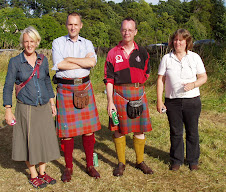Non-knit
Webster’s and Oxford agree – pestle-without-a-“t” is the preferred pronunciation, pestle-with-a-“t” is the second choice. So poof to Neil MacGregor, and to my husband who agrees with him on that point.
Mel (comment yesterday), that is a fascinating piece of information, that gooseberry bushes are forbidden in Maine. What my son James would call a “factoid”, although that’s not what that word means, unfortunately.
Gooseberry bushes here are greatly prone to what is actually called “American gooseberry mould”. I wonder if there is any connection? We put three bushes in when we first made the current vegetable garden, about twelve years ago. They got so mouldy that I took them out after a couple of years. The gooseberries along the old driveway don’t get mouldy, so I took cuttings from them. They struck easily enough, but they don’t go in for cropping. So I am about to take them out and replace with ones which the catalogue boasts are mould-resistant.
Knitting
Thank you for your kind words about the Grandson Sweater, Ron. I’m rather pleased with it myself, at this stage. I started the first sleeve yesterday. After a very little ribbing, it goes straight into a passage of pattern, still very simple. Colour knitting on dp needles is awkward, I keep dropping needles and getting tangled up, but it’s still not as bad as purling. And the excitement of whizzing around the circuit in a few minutes, after the 284-stitch circumference of the body of the sweater, is truly exhilerating.
I should finish the patterned section today. We’ll have a pic tomorrow. It won’t be too long, either, before I have increased enough stitches that I can switch to a short circular.
Theresa, my plan for the Harlequin is to re-write the pattern with more stitches-per-mitre, to achieve the size without knitting Koigu on huge needles. The ball-band says 3 mm for Koigu. I knit the gauge swatch on a 3.5 mm needle, figuring that that would allow me scope to reduce needle size as part of the shaping, the way Slicer-Smith prescribes.
Only I see she uses four different sizes of needle. I may not have allowed myself enough scope. The 3.5mm gauge square is a good texture, I think, firm but not too firm. Maybe I’d better try one at 4mm. Alternatively, see what Koigu is like at 2mm – in either case, so that I have a four-size range to work with.
I long to get cracking on this, but I must do the promised ear-flap hat. I have wound the yarn, and, like last week, intend to take Sunday off to get started. Last Sunday I couldn’t bear to drag myself away from the sweater, and the same thing may happen tomorrow.
And, Theresa, a propos your blog, I would vote against selling knitting books. My motto has always been, even of the absolute dogs -- and I have more than a few of those -- You Never Know.
Subscribe to:
Post Comments (Atom)



Thanks for saving me a trip into my husbands office for the Oxford re. pestle. I do pronounce the t, and have rarely heard otherwise. I was thinking maybe an Americanism, or regional preference, but Neil McG and I have the ocean between us. English -- nestle and pestle should sound the same, no? Re. the sleeves, I hate dpn for two color work, and switch to two circulars for that. It helps me to keep more even tension.
ReplyDeleteGosseberry "factoid": I assume that Scottish and Maine goose- berries are like the ones I grew up with in Iowa, smooth green globes. To my surprise, in California the berry skin is yellow, leathery, and covered in spines! They must be picked wearing heavy gloves. Then they are boiled til they "pop" and only the juice used for jelly.
ReplyDeleteBeverly near Yosemite, CA
Perhaps "infobit" is more accurate, though less easy on the tongue than "factoid". Gooseberries were restricted in New Jersey during the 1970s; if there were no spruce trees within some defined limit, a permit could be granted to plant them.
ReplyDelete"Often" gained an arbitrary "t" during a misguided fad for spelling reform, and later some people began to pronounce it that way. Maybe nestle and pestle were also victims. However, pestle used to be synonymous with pistil. Either way, to pronounce the "t" would spoil "the vessel with the pestle has the pellet with the poison."
Blackberries are regarded as 'noxious weeds' in the Adelaide Hills too. Hard to believe isn't it?
ReplyDeleteAnd I quote from the Cornell Cooperative Extension crop profile for gooseberries, of which I have 3 healthy specimens: "The federal government and many of the surrounding states have dropped their prohibition against growing gooseberries and currants because the real cause of white pine blister rust has been determined to be the black currant. "
ReplyDeleteIt makes sense that Maine would hold out, being careful because it has so many pines. Why take the chance.
A little more on the rust fungi - the white pine blister rust has two hosts - white pine, and the black currant. it has part of its life cycle (which is very complicated and involves 4 different types of spores) on one host, and the other on the other host.
ReplyDeleteSame kind of story for a rust on wheat and on Berberis. When that was discovered a big eradication program of Berberis was launched.